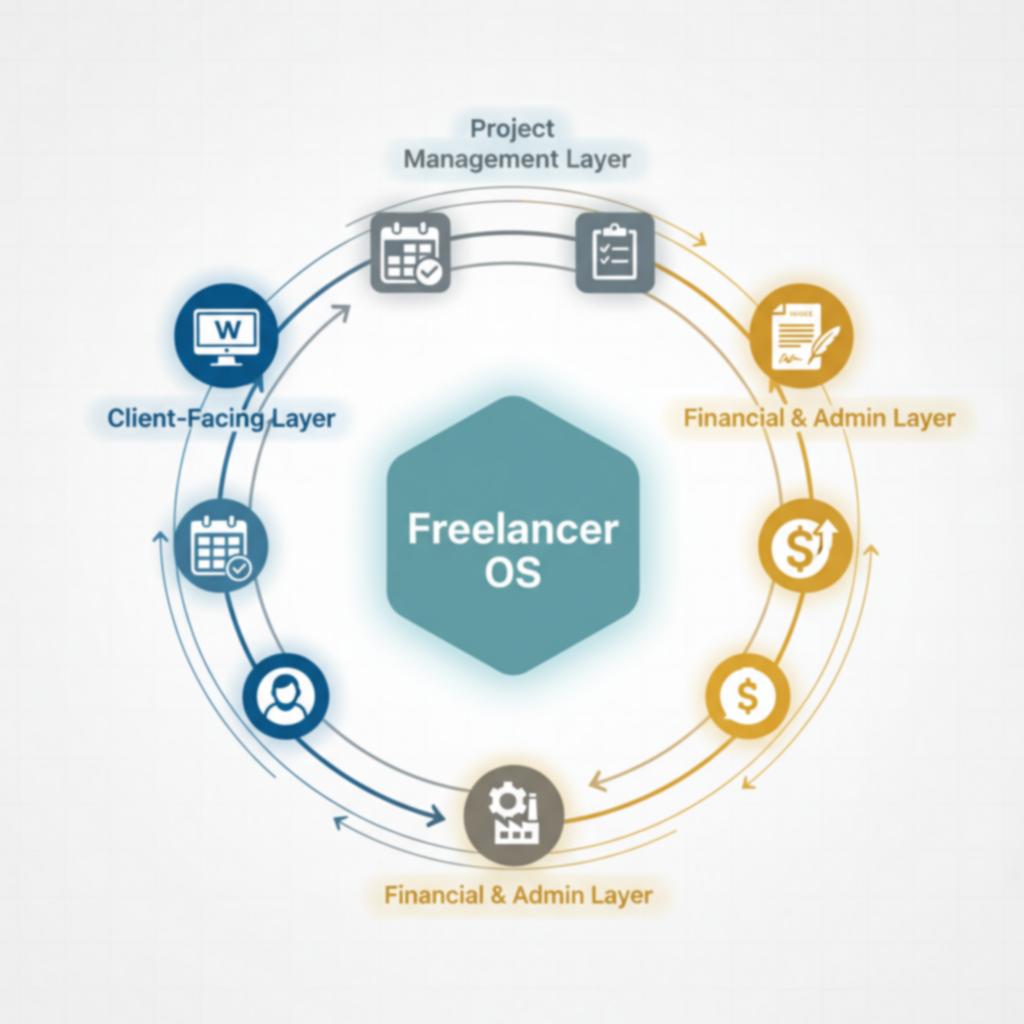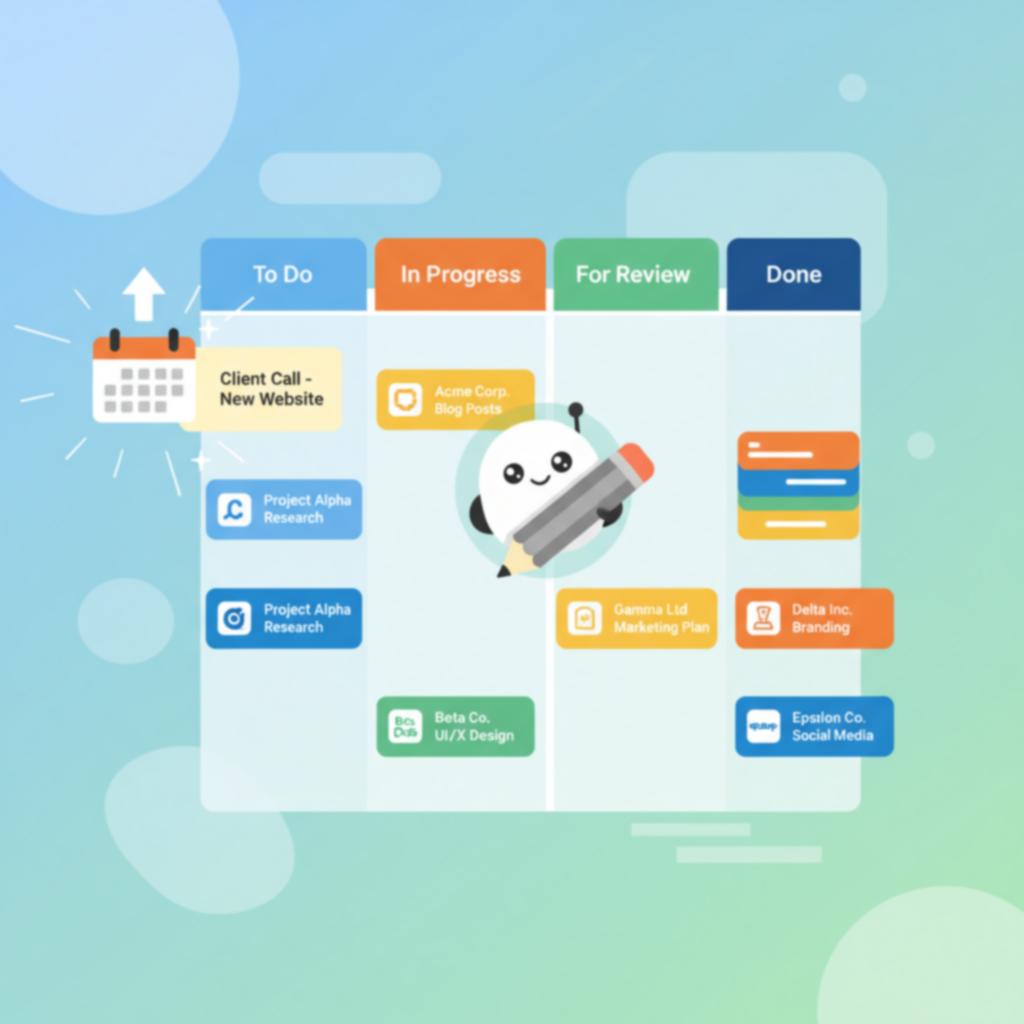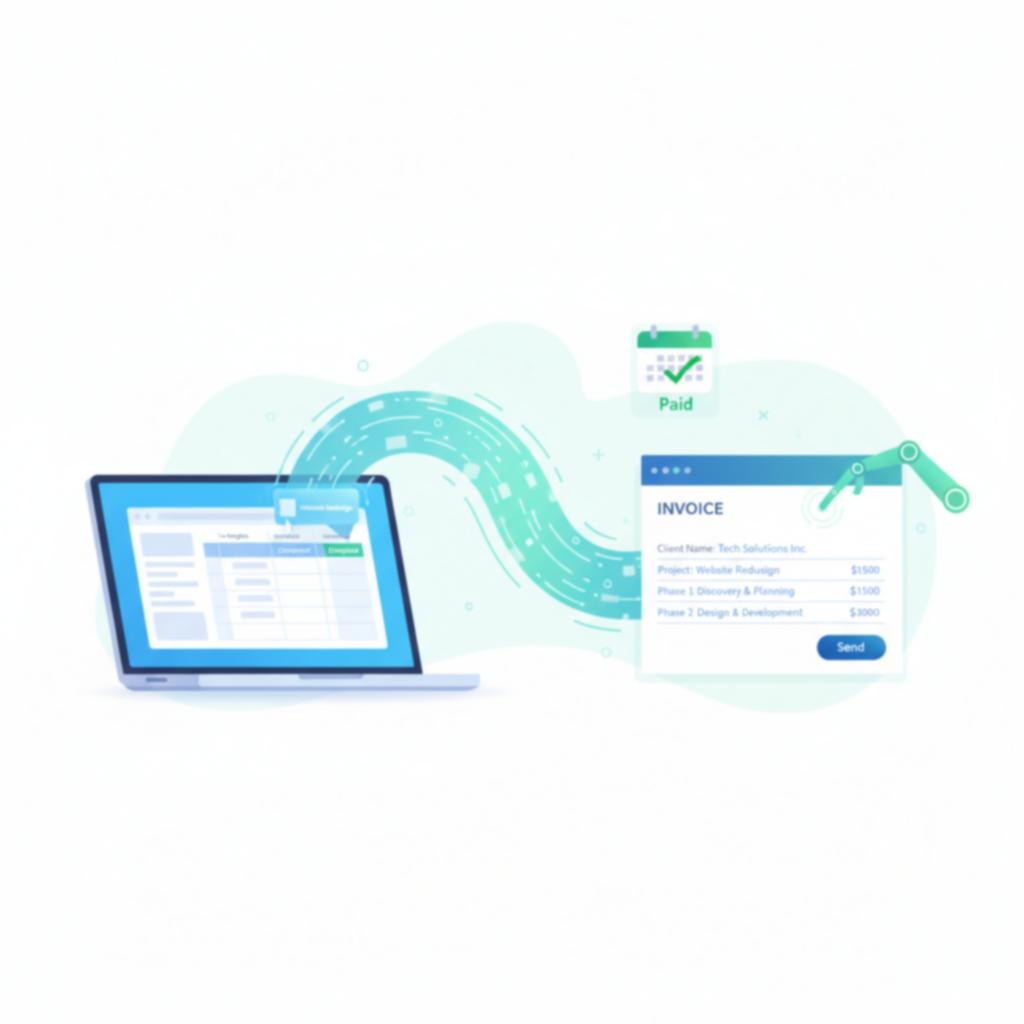Are you spending more time juggling apps, sending invoices, and managing projects than doing the actual work you love? You're not alone. The administrative overhead of freelancing can feel like a full-time job. It’s a chaotic scramble that kills your productivity. But what if you could build a seamless, automated system that handles the grunt work, freeing you up to focus on winning and serving clients? It's time to stop collecting apps and start building your own Freelancer Operating System (OS).
Key Takeaways: Build Your Freelancer OS
- Stop App-Juggling: A Freelancer OS isn't about having more tools; it's about making a few, powerful tools work together automatically.
- Automate Non-Billable Work: Learn how to connect your calendar, project manager, and invoicing software to slash time spent on admin tasks.
- Centralize Your Brand: Your online presence is the "front door" of your OS. We'll show you how a professional page acts as your central credibility hub.
- Leverage Smart AI Tools: Discover how modern AI assistants can write emails, draft proposals, and check your work, integrating directly into your workflow.
- Create a Repeatable System: Build a client intake and project management process that runs itself, ensuring a professional experience every single time.

What Is a Freelancer Operating System, Really?
Forget the literal definition of an operating system like Windows or macOS. For a freelancer, an OS is a strategic framework—a set of tools and automated workflows designed to manage every aspect of your business. It’s how you systematize client acquisition, project delivery, and financial tracking so nothing falls through the cracks.
Think of it in three core layers:
- The Client-Facing Layer: How clients find you, book you, and perceive your brand.
- The Project Management Layer: The internal "factory" where you produce great work.
- The Financial & Admin Layer: How you get paid and keep the business running smoothly.
When these layers talk to each other, the magic happens. A booked meeting in your calendar automatically creates a project in your task manager. A completed project automatically generates an invoice. This is the goal.
Step 1: Architect Your "Client-Facing" Layer
This is your business's storefront. It’s where you build trust and convert prospects into clients. A scattered presence across five different social platforms is a weak foundation. You need a central hub.
Before: A potential client gets your name, Googles you, and finds a sparse LinkedIn profile and a confusing Twitter feed. They aren’t sure what you do or how to hire you, so they move on.
After: A client searches for you and immediately finds your polished Livesume professional page. It clearly lists your expertise, showcases portfolio items, and presents a clear call-to-action on your services page. They can see your value in under 30 seconds.
Your client-facing toolkit should include:
- Credibility Hub: Your Livesume Professional Page. This is non-negotiable. It's the anchor for your entire online presence, linking out to other relevant places but always acting as the source of truth for who you are and what you do.
- Scheduling Automation: A tool like Calendly. Embed it directly onto your Livesume page. This eliminates the endless "what time works for you?" email chains. A client books a discovery call, and it's instantly on your calendar. No friction.
Your Livesume page is the 'front door' of your Freelancer OS. Don't have one yet? Build your professional presence page in minutes and see how it fits into your new automated system.
Build Your Professional Page Now
Step 2: Engineer Your Project Management "Factory"
Once a client is signed, where does the work happen? Email inboxes and sticky notes are where projects go to die. You need a central command center to manage tasks, deadlines, and communication.
The goal here is seamless integration. Your project management hub should be the brain of your OS.
Choosing Your Command Center
- For Visual Thinkers (Kanban): Trello is fantastic. It’s simple to set up and provides a clear, card-based view of your workflow (e.g., To Do, In Progress, For Review, Done).
- For Structured Planners: Asana offers a bit more structure with robust to-do lists, timelines, and dependencies. It’s great if you manage multi-stage projects.
- For All-in-One Builders: Notion can be your project manager, CRM, and content planner all in one. It has a steeper learning curve but offers unparalleled flexibility to build a truly custom dashboard for your entire OS.

Stress-Testing Your Automation Workflow
This is the framework for connecting your tools. Don't just use them in isolation—make them work for you. Let's stress-test a common freelance workflow:
- Trigger: A client books a "Project Kick-off" call via your embedded Calendly.
- Action 1 (Automation): Use a tool like Zapier or Make.com to connect Calendly to your project manager. The new Calendly event automatically creates a new client project in Trello or Asana. It can even pre-populate a checklist of your standard onboarding tasks.
- Action 2 (AI-Assist): Now, you need to draft a welcome email and project outline. Instead of starting from scratch, use an AI tool like Editpad AI Toolkit to generate a clean first draft based on your call notes. Then, run it through ZeroGPT to ensure it sounds human and authentic. This cuts your drafting time in half.
This automated sequence turns a 45-minute manual onboarding process into a 10-minute review and personalization task. That's billable time you just got back.
Step 3: Systematize Your Financial & Admin Layer
Getting paid shouldn't be the hardest part of freelancing. This layer handles proposals, contracts, invoicing, and payments. Automation here is critical for maintaining healthy cash flow and a professional image.
- All-in-One Finance Tools: Platforms like Bonsai or Wave are built for freelancers. They let you create proposals, send contracts, track time, and issue invoices from one place. Many, like Bonsai, automate the entire sequence: once a client signs a proposal, it auto-generates the first invoice.
- Communication Hub: While email works, using Slack for client communication can be much more efficient. Create a dedicated channel for each client to keep all conversations, files, and feedback organized and out of your cluttered inbox.

Putting It All Together: Your Actionable Implementation Plan
Building your Freelancer OS won't happen overnight, but you can start today. Don't try to implement everything at once. Sequence your build-out for maximum impact.
- Week 1: Build Your Storefront. Create or polish your Livesume professional page. Make it the undeniable hub of your brand. Add your services and integrate a Calendly link. This is your foundation.
- Week 2: Choose and Configure Your Project Hub. Pick either Trello, Asana, or Notion. Create a template for a "New Client Project" with your standard tasks. Don't overcomplicate it; just map out your core process.
- Week 3: Connect Your First Automation. Set up the Calendly → Trello/Asana workflow. This is a massive first win and will immediately show you the power of an integrated system.
- Week 4: Streamline Your Finances. Sign up for Wave (free) or trial Bonsai. Create an invoice template and connect your bank account. The next project you start, run it through this system from proposal to final payment.
Frequently Asked Questions (FAQ)
- How do I create a freelance workflow?
- Start by mapping your process on paper. What are the exact steps from the moment a client contacts you to when you're paid? Identify the key stages (e.g., Inquiry, Proposal, Onboarding, Delivery, Invoicing) and then find a tool for each stage. The workflow is the connection between those tools.
- What is the best tech stack for a freelancer?
- The best stack is the one you'll actually use. However, a great starting point is: Livesume (for your professional page), Calendly (for scheduling), Trello (for project management), and Wave (for invoicing). This combination is powerful, low-cost, and easy to learn.
- How can I automate my freelance business?
- Focus on the hand-off points between tasks. The top three automations to start with are: 1) Scheduling to task creation (Calendly → Trello), 2) Proposal acceptance to invoice generation (Bonsai/HoneyBook), and 3) Using AI text generators to create first drafts of common documents like emails or project plans.
- What are the essential tools for a new freelancer?
- Don't overspend. You need: 1) A professional online presence (a Livesume page is perfect). 2) A way to manage projects (Trello's free plan is excellent). 3) A way to invoice (Wave is free). 4) A reliable calendar (Google Calendar). Master these before adding more complexity.
- Can Notion be used as a freelancer dashboard?
- Absolutely. Notion is incredibly powerful for creating a custom freelancer dashboard. You can build a CRM to track leads, a project manager with linked tasks and notes, and even an invoice tracker. It requires more setup time, but it can replace 3-4 other apps if you're willing to build it out.
- How can AI help me as a freelancer?
- AI is your new assistant. Use it to brainstorm ideas, draft emails, summarize meeting notes, write social media posts promoting your services, and check your writing for errors. Tools like Editpad AI Toolkit are great for content generation, while ZeroGPT helps refine the tone to sound more human.
- What's the best way to handle invoicing and payments?
- Use a dedicated invoicing tool like Wave, Bonsai, or FreshBooks. They create professional-looking invoices, track payment status, send automatic reminders for late payments, and make tax time much easier by keeping all your income in one place. Avoid sending invoices from a Word doc.